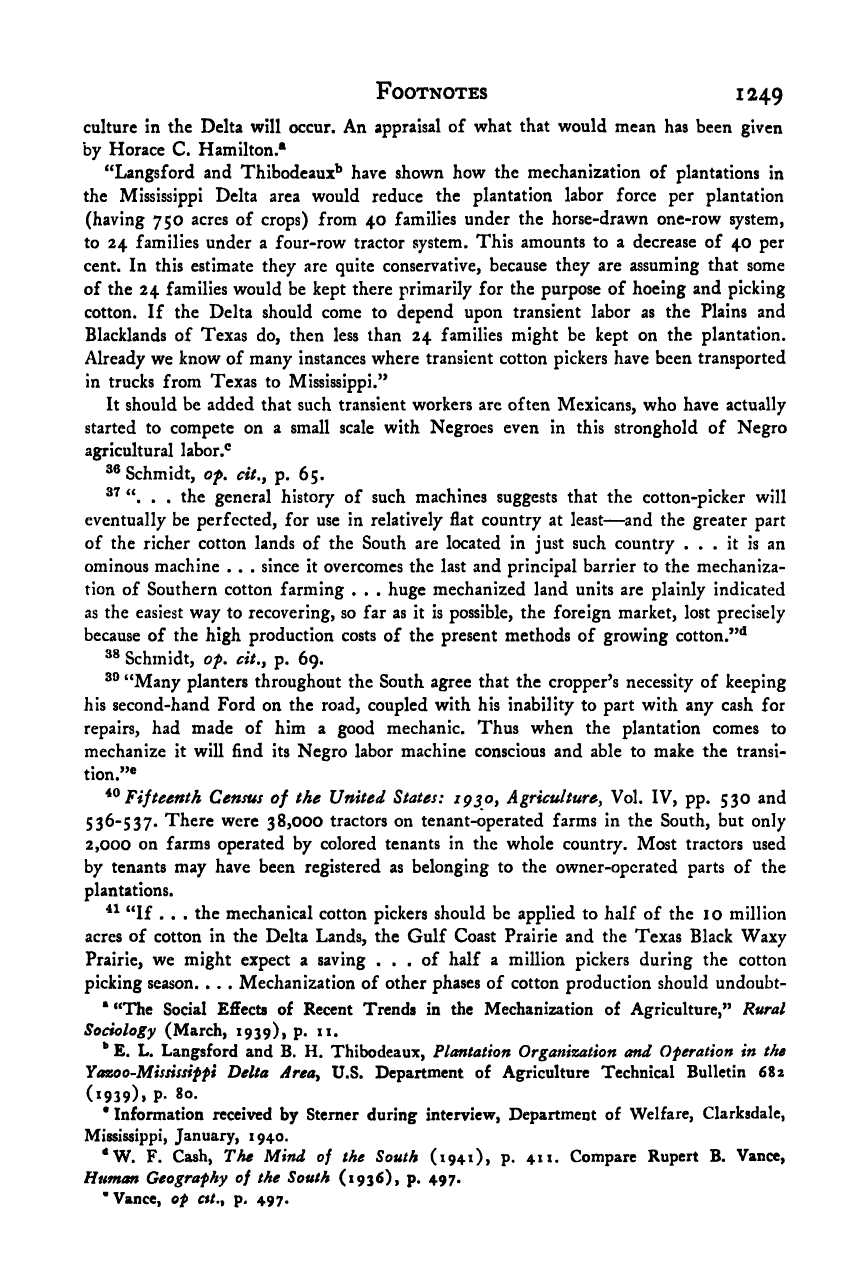Note: Gunnar Myrdal died in 1987, less than 70 years ago. Therefore, this work is protected by copyright, restricting your legal rights to reproduce it. However, you are welcome to view it on screen, as you do now. Read more about copyright.
Full resolution (TIFF) - On this page / på denna sida - Footnotes - Chapter 12

<< prev. page << föreg. sida << >> nästa sida >> next page >>
Below is the raw OCR text
from the above scanned image.
Do you see an error? Proofread the page now!
Här nedan syns maskintolkade texten från faksimilbilden ovan.
Ser du något fel? Korrekturläs sidan nu!
This page has never been proofread. / Denna sida har aldrig korrekturlästs.
Footnotes 1249
culture in the Delta will occur. An appraisal of what that would mean has been given
by Horace C. Hamilton.*
“Langsford and Thibodeaux’* have shown how the mechanization of plantations in
the Mississippi Delta area would reduce the plantation labor force per plantation
(having 750 acres of crops) from 40 families under the horse-drawn one-row system,
to 24 families under a four-row tractor system. This amounts to a decrease of 40 per
cent. In this estimate they are quite conservative, because they are assuming that some
of the 24 families would be kept there primarily for the purpose of hoeing and picking
cotton. If the Delta should come to depend upon transient labor as the Plains and
Blacklands of Texas do, then less than 24 families might be kept on the plantation.
Already we know of many instances where transient cotton pickers have been transported
In trucks from Texas to Mississippi.”
It should be added that such transient workers are often Mexicans, who have actually
started to compete on a small scale with Negroes even in this stronghold of Negro
agricultural labor.®
Schmidt, of, cit,^ p. 65.
. . the general history of such machines suggests that the cotton-picker will
eventually be perfected, for use in relatively flat country at least—and the greater part
of the richer cotton lands of the South are located in just such country ... it is an
ominous machine . . . since it overcomes the last and principal barrier to the mechaniza-
tion of Southern cotton farming . . . huge mechanized land units are plainly indicated
as the easiest way to recovering, so far as it is possible, the foreign market, lost precisely
because of the high production costs of the present methods of growing cotton.”**
Schmidt, of, cit,y p. 69.
“Many planters throughout the South agree that the cropper’s necessity of keeping
his second-hand Ford on the road, coupled with his inability to part with any cash for
repairs, had made of him a good mechanic. Thus when the plantation comes to
mechanize it will find its Negro labor machine conscious and able to make the transi-
tion.”®
Fifteenth Census of the United. States: 1^30, Agriculture^ Vol, IV, pp. 530 and
536-537. There were 38,000 tractors on tenant-operated farms in the South, but only
2,000 on farms operated by colored tenants in the whole country. Most tractors used
by tenants may have been registered as belonging to the owner-operated parts of the
plantations.
“If . . . the mechanical cotton pickers should be applied to half of the 10 million
acres of cotton in the Delta Lands, the Gulf Coast Prairie and the Texas Black Waxy
Prairie, we might expect a saving ... of half a million pickers during the cotton
picking season. . . . Mechanization of other phases of cotton production should undoubt-
<< prev. page << föreg. sida << >> nästa sida >> next page >>